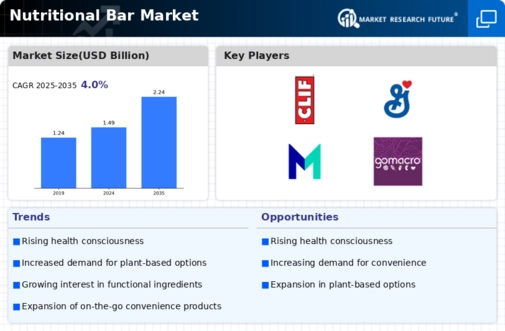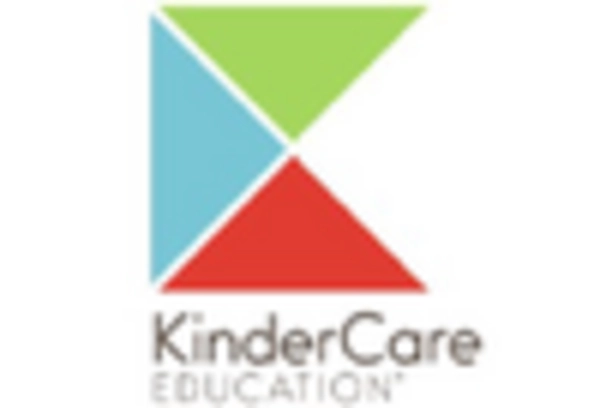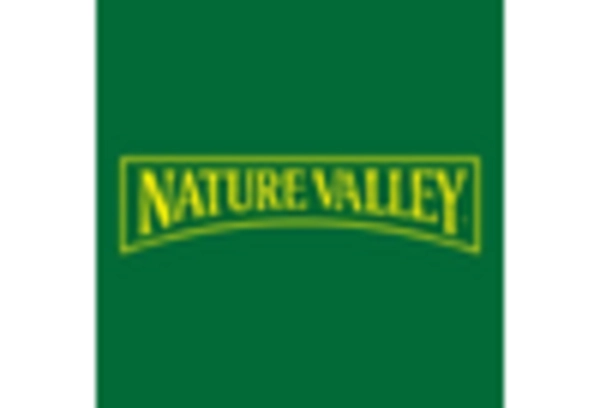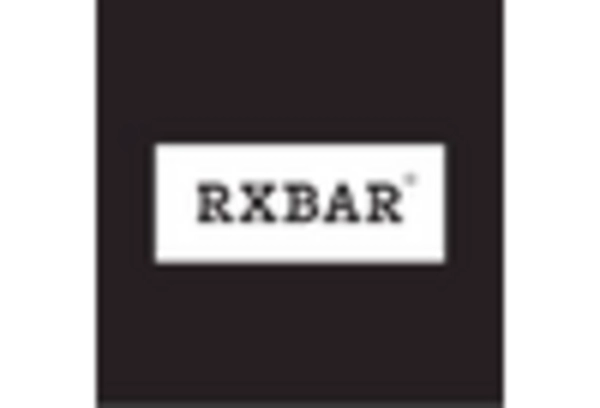Diverse Flavor Profiles
The Nutritional Bar Market is witnessing a transformation driven by the introduction of diverse flavor profiles that cater to evolving consumer preferences. As consumers become more adventurous in their taste choices, brands are innovating to offer unique and appealing flavors that enhance the overall snacking experience. Recent market data suggests that flavor innovation is a key driver, with a significant portion of consumers expressing interest in trying new and exotic flavors. This trend not only attracts new customers but also encourages brand loyalty among existing consumers. The ability to provide a variety of flavors can differentiate products in a crowded market, making it a crucial factor for success in the nutritional bar segment.
Increasing Health Consciousness
The Nutritional Bar Market is experiencing a notable surge in demand driven by a growing awareness of health and wellness among consumers. As individuals increasingly prioritize their dietary choices, the appeal of nutritional bars as convenient, on-the-go snacks has intensified. Recent data indicates that the health and wellness food sector is projected to grow at a compound annual growth rate of approximately 8.5% over the next five years. This trend suggests that consumers are actively seeking products that align with their health goals, thereby propelling the nutritional bar segment forward. Furthermore, the rise in lifestyle-related health issues has prompted consumers to opt for healthier snack alternatives, further solidifying the nutritional bar's position in the market.
Focus on Sustainable Ingredients
The Nutritional Bar Market is increasingly influenced by a growing consumer preference for sustainable and ethically sourced ingredients. As awareness of environmental issues rises, consumers are seeking products that align with their values, including those that prioritize sustainability. Market Research Future indicates that a significant percentage of consumers are willing to pay a premium for products made with organic and responsibly sourced ingredients. This trend suggests that brands focusing on sustainability are likely to gain a competitive edge in the nutritional bar segment. By incorporating eco-friendly practices and transparent sourcing, companies can appeal to environmentally conscious consumers, thereby fostering brand loyalty and driving growth in the nutritional bar market.
Rise of E-commerce and Online Retail
The Nutritional Bar Market is increasingly benefiting from the rise of e-commerce and online retail platforms. As consumers become more accustomed to shopping online, the accessibility of nutritional bars through various digital channels is expanding. Recent statistics indicate that online grocery sales have surged, with a projected growth rate of over 20% in the next few years. This shift in purchasing behavior allows consumers to explore a wider range of nutritional bar options, including niche and specialty products that may not be available in traditional retail settings. The convenience of online shopping, coupled with the ability to compare products and read reviews, is likely to enhance consumer confidence and drive sales in the nutritional bar market.
Convenience and On-the-Go Consumption
The Nutritional Bar Market is significantly influenced by the increasing demand for convenience in food consumption. As modern lifestyles become busier, consumers are seeking quick and nutritious snack options that fit seamlessly into their daily routines. Nutritional bars offer a practical solution, providing essential nutrients in a portable format. Market analysis reveals that the convenience food sector is expected to expand, with a projected growth rate of around 6% annually. This trend indicates that nutritional bars are well-positioned to cater to the needs of busy professionals, students, and active individuals who prioritize both nutrition and convenience. The ability to consume a balanced snack without compromising on time is likely to drive further growth in this segment.


















Leave a Comment